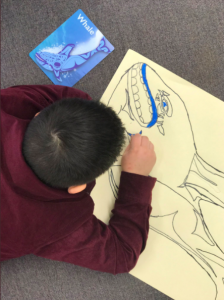I came across these websites while working on our final project. The following resources are ones that I found that support our focus: Social Emotional Learning and the Circle of Courage.
I really like this website because it explains the Circle of Courage in detail, and includes real classroom experience. It gives a ton of great examples that teachers can use that utilize this framework.
2. Aboriginal Family and Community Literacy Curriculum Workshop #6
What I like about this website is the way it organizes the big ideas It talks about the different spirits of belonging (attached, loving, friendly), the distorted spirits of belonging (gang loyalty, craves affection, promiscuous), and the broken spirits of belonging (unattached, rejected, lonely). It also provides way to mend a broken spirit, which I think is extremely significant as classroom teachers. “Create a cohesive classroom environment where each child can fell like an important member, give positive encouragement, recognize individuality and creative talents, make sure teacher/caregiver expectations are very clear so children understand classroom expectations, be specific when reinforcing a child’s positive behaviour, with discipline and behaviour, focus on the deed and not the doer” (UBC). I found this information to be so encouraging when dealing with social emotional needs in the classroom this week. The entire page is helpful, and I will constantly refer back to this as I implement the Circle of Courage this year.
Possibly one of my favourite schools that I’ve had the opportunity to visit. If you haven’t had a chance to check this one out, you should book a tour date as professional development. It is a public school, housed at UBC. This is the school’s Circle of Courage Code of Conduct. When we first entered the school last year on a tour, I noticed a huge artwork designed by students that covered all aspects of the Circle of Courage. I was amazed at the intricate detail. I love how they used the different traits, connected to an Indigenous animal, and the qualities that align. For example, “Come to school ready to learn and always do your best. Set personal goals and make plans to achieve them. Take pride in your achievements and celebrate growth” as examples of Mastery.
4. A Positive Learning Framework for Classroom Management
This is a great article about using the Circle of Courage, and how it relates to a positive learning framework. Some of the big ideas covered include describing the need for positive focus on student behaviour and exploring students needs. It covers many aspects of Social Emotional Learning: self-esteem, social and emotional development, and feelings/emotions.
5. Resources for Integrating Aboriginal Ways of Knowing and Learning
I came across this site as I was researching social emotional learning and Indigenous education. What I like is that it is organized by grade and big ideas, to align with BC’s new curriculum. There are ideas for numeracy and literacy. For example, if we look to the big idea in grade 3 science, we can see that living things are diverse, can be grouped, and interact in their ecosystems. It provides a lesson topic: ecosystems. It then goes on to provide discussion questions, connections to First Peoples’ Principles of Learning, Aboriginal Worldview’s and Perspectives, and core competencies.


